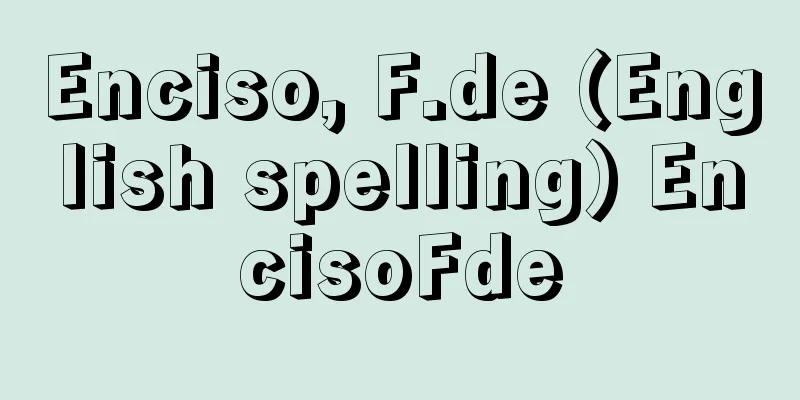Euclidean geometry

|
Geometry developed by Euclid in his work Elements ( Stoikheia ). Elements is a 13-volume work that compiles Greek mathematics up to that time, and consists of plane geometry (volumes 1-6), number theory, real number theory (volumes 7-10), and solid geometry (volumes 11-13). The parts related to integers and real numbers use geometric terminology, and most of Elements is geometry, so it is also called Elements of Geometry. The geometry dealt with in Elements has now been expanded to n dimensions, but it is called Euclidean geometry to distinguish it from other geometries that have appeared one after another since the 19th century, and two- and three-dimensional Euclidean geometry that is performed by a method that mainly relies on argument, as in Elements, is called elementary geometry. Elements begins with 23 definitions, 5 postulates, and 5 axioms. After explaining the terms through definitions, he lists the following five postulates (which we would call the axioms of geometry today): (1) The two points can be connected with a line segment. (2) A line segment can be extended into a straight line any number of times. (3) It is possible to draw a circle of any radius centered at any point. (4) All right angles are equal to one another. (4) If the angles α and β formed when two straight lines l and l ' intersect with another straight line l '' satisfy α + β < 180°, then l and l ' will always intersect when extended to the side where the angles α and β are located. The five axioms state propositions that apply to mathematics in general, such as "the whole is greater than the part" and "things that are equal to the same thing are equal to each other." Euclid organized the numerous theorems of geometry that had been known up until that point into a system of proof in which each theorem could be proven only from previous theorems and proofs, and adopted the five postulates mentioned above as the basic premise of this system. Geometry, which started out with applications to land surveying and astronomical observation, was developed for the first time into an academic discipline with a grand logical system through the work Elements. The fifth postulate is not as clear as the other five, and it seems unnatural, so there was doubt that it could be proved from the other postulates. This postulate was later found to be equivalent to "there is exactly one parallel line passing through a point outside a line" (parallel postulate), but leaving a proposition that was believed to be proven from other postulates as a postulate was considered a major stain on geometry as a perfect system of argument. Therefore, many outstanding scholars attempted to prove the parallel postulate, but it was a quagmire that consumed time and effort. Around 1830, 2000 years after "Elements," Russia's Lobachevsky and Hungary's Bolyai independently showed that a consistent geometry could be constructed even if the fifth postulate was replaced with another postulate, "there are two parallel lines passing through a point outside a line." This was the non-Euclidean geometry that was later called hyperbolic geometry. This discovery denied the uniqueness of Euclidean geometry and marked the beginning of a new era in geometry. In fact, the research of Riemann, Klein and others led to the development of new, more general geometries. Meanwhile, the invention of the coordinate system by Descartes and Fermat in the 16th century paved the way for the study of Euclidean geometry using calculations. This method, which was later called analytic geometry, enriched the content of Euclidean geometry and made it possible to extend it from three dimensions to general n dimensions. In other words, the distance between two points ( x1 , x2 ,……, xn ), (y1 , y2 ,……, yn ) in n- dimensional number space can be calculated as [Tachibana Shunichi] "Elements of Euclid" by Euclid, translated by Koshiro Nakamura et al. (1972, Kyoritsu Shuppan) [Reference] |©Shogakukan "> Euclidean Geometry (5th Postulate) Source: Shogakukan Encyclopedia Nipponica About Encyclopedia Nipponica Information | Legend |
|
ユークリッドがその著『原論』(『ストイケイア』Stoikheia)で展開した幾何学。『原論』はその時代までのギリシア数学を集大成した13巻の書で、平面幾何(第1巻~第6巻)、整数論、実数論(第7巻~第10巻)、立体幾何(第11巻~第13巻)からなる。整数、実数に関する部分も幾何学の用語を使っているうえに、『原論』の大部分が幾何学なので『幾何学原論』ともよばれる。『原論』で扱われている幾何学は現在n次元まで拡張されているが、19世紀以後続々と出現した他の幾何学と区別して、これをユークリッド幾何学といい、『原論』におけるように論証を主体とする方法によって行う二、三次元のユークリッド幾何学をとくに初等幾何学とよぶ。『原論』は23個の定義、5個の公準、5個の公理から始まる。定義によって用語の説明をしたのち、次の5個の公準(今日のことばでは幾何学の公理)をあげている。 (1)2点を線分で結ぶことができる。 (2)線分は直線にいくらでも延長できる。 (3)任意の点を中心とした任意の半径の円を描くことができる。 (4)直角はすべて互いに相等しい。 (4)二つの直線l、l′が他の直線l″と交わってできる交角α、βがα+β<180゜を満たすならば、lとl′とは交角α、βのある側に延長するとかならず交わる。 5個の公理は「全体は部分より大きい」「同じものに等しいものはまた互いに等しい」のように数学一般について成り立つ命題を述べている。ユークリッドは、幾何学のそれまで知られている数多くの定理を、どの定理もそれ以前の定理と論証だけから証明するという論証体系にまとめ上げ、この体系の大前提として先に述べた5個の公準を採用した。土地測量術や天体観測術への応用から出発した幾何学はこの『原論』によって初めて壮大な論理的体系をもつ学問に発展することとなった。 第五公準は他の5個の公準ほど簡明でなく、また不自然な感じがあるために、他の公準から証明できるのではないかという疑いがもたれた。この公準は、その後「1直線外の1点を通ってちょうど1本の平行線が存在する」(平行線公理)と同値であることがわかったが、他の公準から証明されるに違いない(と信じられる)命題を公準として残しておくことは、完璧(かんぺき)な論証体系としての幾何学にとって大きな汚点と考えられた。そのため平行線公理の証明に多くの優れた学者が立ち向かったが、時間と労力を飲み尽くす泥沼であった。『原論』から2000年もたった1830年前後になって、ロシアのロバチェフスキーとハンガリーのボヤイは独立に、第五公準を「1直線外の1点を通って2本の平行線が存在する」という別の公準で置き換えても矛盾のない幾何学が建設されることを示した。これがのちに双曲幾何学とよばれる非ユークリッド幾何学である。この発見はユークリッド幾何学の唯一性を否定し、幾何学の新時代の幕開きとなったものである。実際、リーマン、クラインなどの研究によって新しい、より一般的な幾何学が続々誕生していった。 一方、16世紀におけるデカルト、フェルマーによる座標系の考案は、ユークリッド幾何学に計算を利用して研究する道を開いた。のちに解析幾何学とよばれるこの方法は、ユークリッド幾何学の内容をさらに豊かにし、かつ三次元から一般のn次元への拡張を可能にした。すなわち、n次元数空間の2点(x1,x2,……,xn),(y1,y2,……,yn)の間の距離を [立花俊一] 『ユークリッド著、中村幸四郎他訳『ユークリッド原論』(1972・共立出版)』 [参照項目] |©Shogakukan"> ユークリッド幾何学(第5公準) 出典 小学館 日本大百科全書(ニッポニカ)日本大百科全書(ニッポニカ)について 情報 | 凡例 |
>>: Euclid - English spelling: Euclid
Recommend
《Dictionary of American English》 - Amerikaeigojiten
…The editor was a school teacher named Samuel Joh...
Nísos Kérkyra (English spelling)
...area: 593 km2 , population: 97,000 (1981). The...
Kajitori - helmsman
Also called kandori. A title given to the captain ...
Schizophrenia
A type of mental illness. In 2002, the name was ch...
Gokenin - retainer
(1) A samurai who had a lord-vassal relationship ...
Thomas
[1] (Albert Thomas) French politician. Socialist. ...
Nobutoshi Kiyohara
1077-1145 A Confucian scholar in the late Heian p...
Aretas IV (English spelling)
…The Nabataeans were a branch of nomadic Arabs or...
Isometric contraction
…The latter is characterized by the fact that the...
Cutout Shadow Art - Cutout Shadow Art
…It is a game in which figures resembling people,...
Osireion (English spelling)
A temple in Abydos, an ancient Egyptian holy site ...
Tsurumi Line - Tsurumisen
A railway line that runs through the center of the...
Right drain - Ukyo
…His influence once extended as far as Liaodong. ...
Compound explosives - explosives
...The theoretical nitrogen content is 14.14%, bu...
Perrier - Casimir Périer
French politician. He was president of Banque Per...


![Shimoyama [village] - Shimoyama](/upload/images/67cbcbb60f21f.webp)






